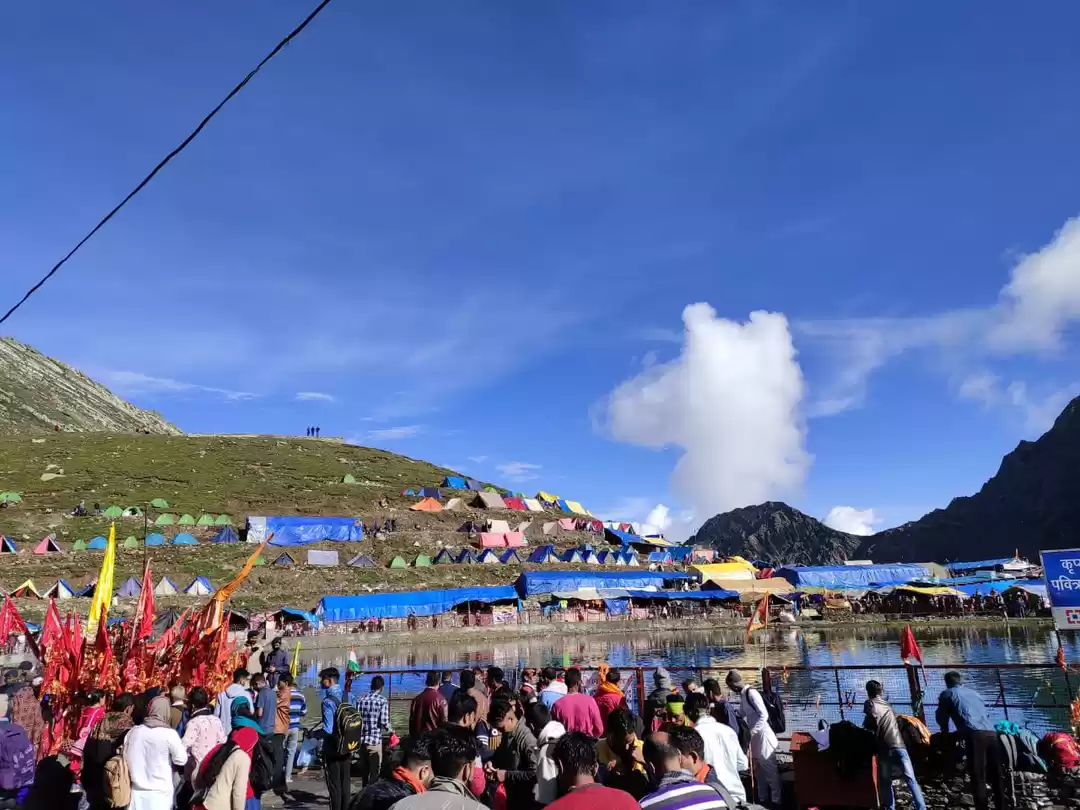There are journeys we take for adventure, and there are journeys we take for the soul. For me, the Manimahesh Kailash Yatra in Himachal Pradesh falls squarely in the second category. Perched at an altitude of around 13,000 feet, with the mighty Kailash peak (18,564 ft) towering above, the sacred Manimahesh Lake is considered one of the holiest spots dedicated to Lord Shiva.
What makes this pilgrimage unforgettable isn’t just the destination but the path itself—forests, waterfalls, roaring rivers, camps under starlit skies, and an atmosphere filled with faith and resilience. Let me take you along this journey, step by step, so you can feel the pull of Manimahesh for yourself.
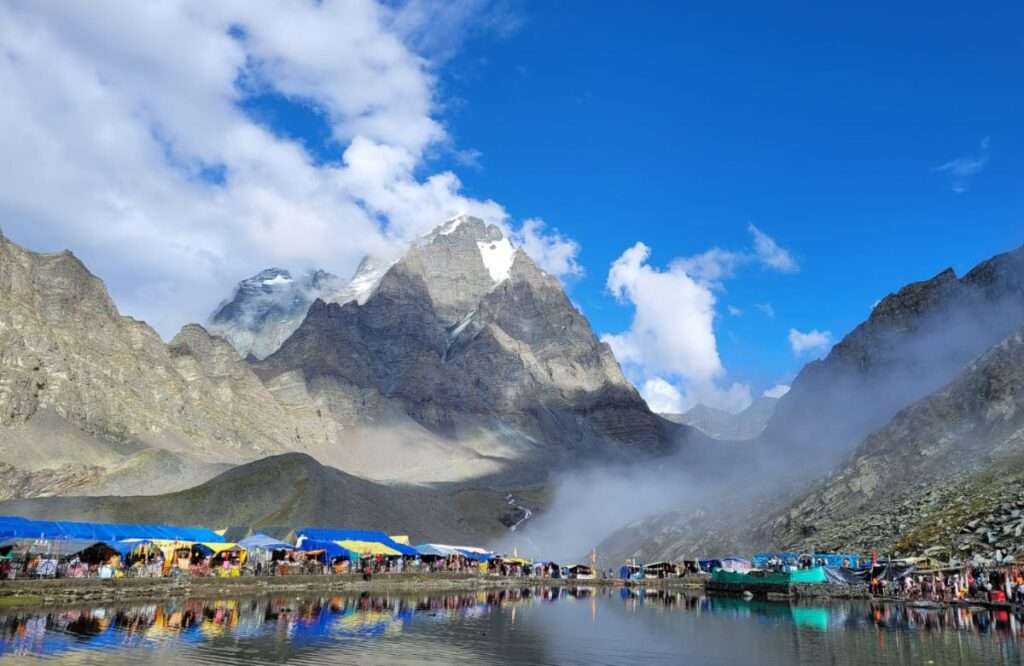
Reaching the Base – The Road to Bharmour
Most yatras begin at Bharmour, a quaint town in Himachal’s Chamba district. Getting here involves a winding ride through narrow mountain roads, but the views more than make up for the bumps. The Ravi River flows alongside, villages cling to slopes, and apple orchards add splashes of color.
Bharmour itself is charming. Pilgrims usually visit the Chaurasi Temple Complex here first, seeking blessings before heading up. It’s believed that Shiva himself rests in these temples, so offering prayers here is considered part of the ritual.
From Bharmour, it’s about 13 km to Hadsar, the actual trekking base. Shared taxis or jeeps usually take you up to this point. The excitement begins to rise as you see groups of pilgrims preparing, tying flags, and stocking up on last-minute essentials like raincoats or wooden sticks.
The Trek Route – Hadsar to Manimahesh Kailash Yatra
The trek is about 13 km one way, and though it can be completed in a single long day by the very fit, most people prefer to break it into stages. Here’s how it unfolds:
Stage 1: Hadsar to Dhancho (6 km)
This stretch winds through forests and alongside the Budhil River. Wooden bridges creak underfoot, waterfalls splash down the slopes, and the sound of bells from fellow pilgrims keeps you motivated. The climb is steep in places, and after a couple of hours, the trail opens into the meadow of Dhancho (around 11,000 ft).
Dhancho is a popular overnight stop. Camps are set up here with tents, langars, and dhabas serving simple meals. At night, you’ll hear chants of “Har Har Mahadev” echoing through the valley as tired pilgrims sip hot tea under the stars.
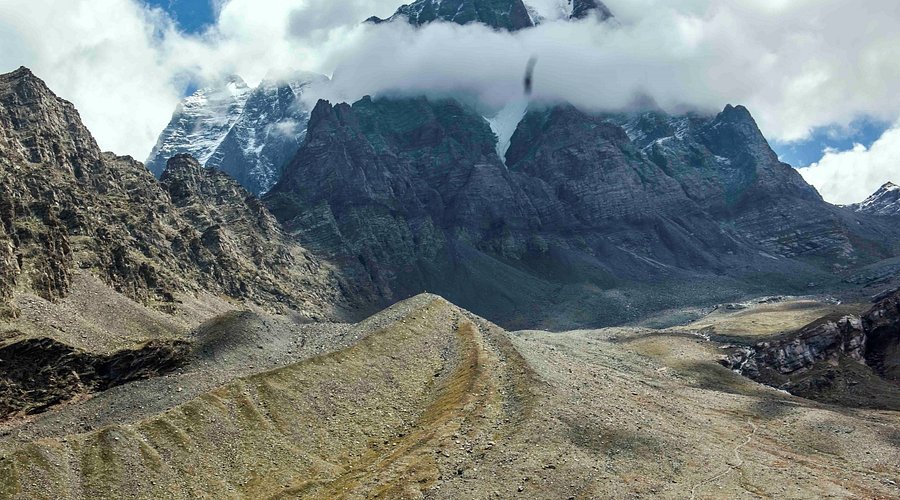
Stage 2: Dhancho to Gauri Kund (3 km)
The trail now steepens sharply. The air feels thinner, and each step demands effort. Along the way, you pass the sacred Gauri Kund, a glacial lake reserved for women pilgrims, who traditionally take a dip here before proceeding further. The atmosphere is hushed, almost reverent.
Stage 3: Gauri Kund to Manimahesh Lake (4 km)
The final climb brings you face to face with snow patches, sharp ridges, and panoramic views. And then, suddenly, the ground levels out, and you see the shimmering waters of Manimahesh Lake with the mighty Kailash peak standing tall in the background.
The first glimpse takes your breath away. The lake reflects the peak in its still waters, and pilgrims gather around, some crying, some chanting, some sitting silently in awe. It feels less like reaching a destination and more like arriving at a truth.
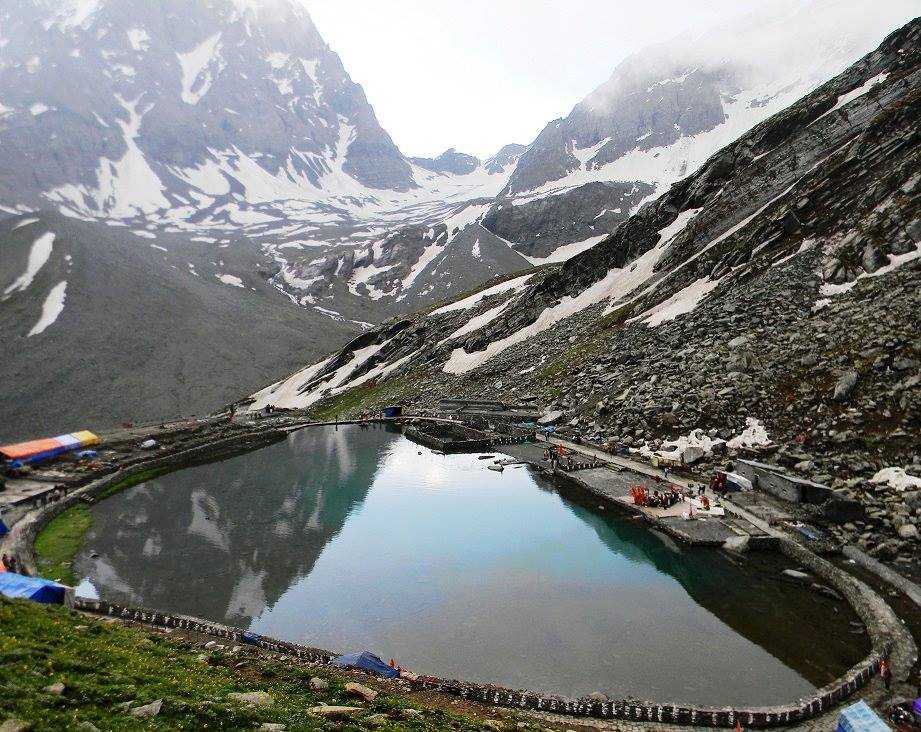
The Magic of Manimahesh Lake
The lake itself sits at around 13,000 feet, fed by melting glaciers. According to legend, Lord Shiva meditated here after marrying Parvati, and the peak is believed to be his eternal abode. Unlike other treks where the view is the highlight, here the energy of the place is what stays with you.
Pilgrims often take a dip in the icy waters, believing it cleanses the soul. I watched people shiver, teeth chattering, but eyes closed in deep devotion as they entered the lake. For many, it’s not just tradition—it’s an act of surrender.
As evening sets in, the atmosphere becomes surreal. Priests perform aarti by the lake, diyas float on the water, and the snow peak glows golden with the last rays of the sun. If there is a moment when heaven feels close to earth, this is it.
The Challenges of the Yatra
But let me be honest right at the start: the yatra isn’t easy. It’s beautiful, yes. It’s deeply spiritual, absolutely. But it also tests you—physically, mentally, and even emotionally. If you’ve ever thought of going, it’s important to know the challenges that await. That way, when you finally reach the lake and see Shiva’s abode reflecting in its waters, you’ll understand why the struggle was worth it.
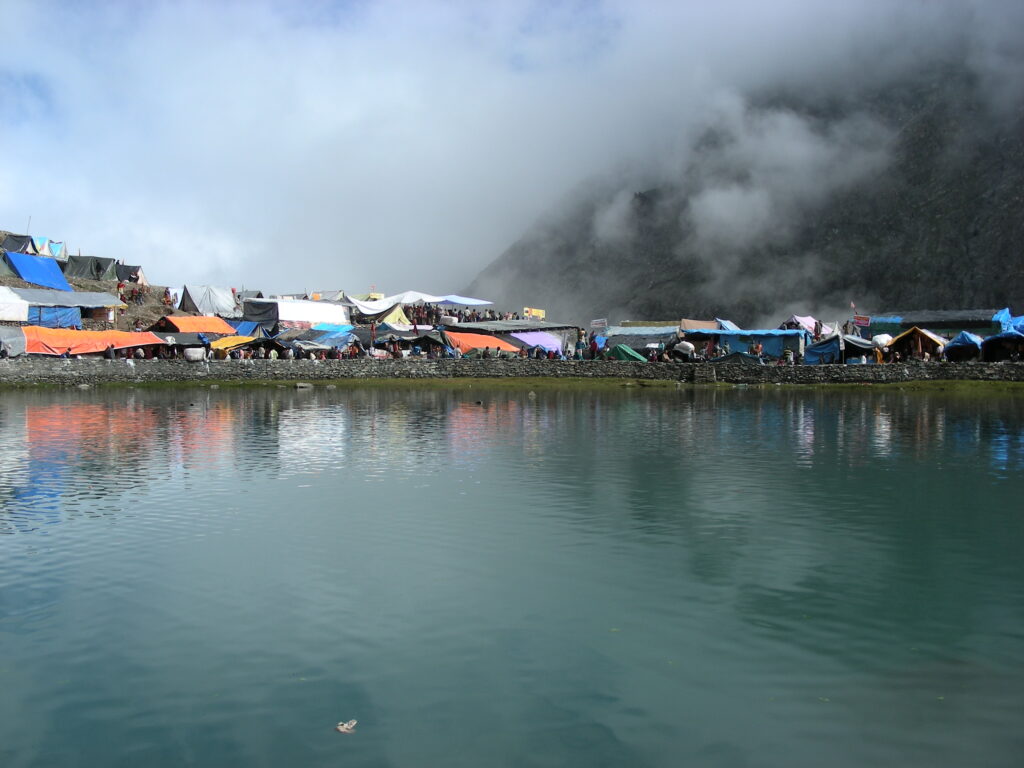
The Physical Challenge – Steep Trails and Long Hours
The trek from Hadsar to Manimahesh Lake is roughly 13 km one way, but don’t let the number fool you. The trail isn’t a gentle hike—it’s a steep climb for most of the way.
- The first stretch to Dhancho (about 6 km) already gets your heart pumping. The path is narrow, uneven, and sometimes slippery with mud or rainwater. Your legs feel the strain early on.
- From Dhancho to Gauri Kund, the gradient increases, and the air begins to thin. Each step feels heavier than the last.
- The final 4 km to the lake are the toughest—steep ascents, cold winds, and tired muscles all working against you.
Even if you’re a reasonably fit person, the trail makes you realize how much stamina you actually need. And for many pilgrims who aren’t seasoned trekkers, this is the biggest challenge.
The Weather Challenge – Four Seasons in a Day
If the trail doesn’t surprise you, the weather surely will. In the mountains, especially at high altitudes, the climate changes faster than you can blink.
- Mornings often start sunny, with clear skies and warm rays giving you hope.
- By afternoon, clouds roll in, and sudden showers drench you within minutes.
- By evening, temperatures plummet, and you may find yourself shivering in your damp clothes.
- If you’re really “lucky,” you might even experience unexpected snowfall, even in August or September.
Carrying the right gear—raincoat, layers, waterproof shoes—is essential. But even then, there’s something mentally draining about battling rain, wind, and cold while trying to keep moving uphill.

The Altitude Challenge – Thin Air, Heavy Legs
At sea level, we take oxygen for granted. At 12,000–13,000 feet, you suddenly realize how precious every breath is. The air is thinner here, and altitude sickness isn’t uncommon.
Some pilgrims experience:
- Headaches
- Nausea
- Dizziness
- Shortness of breath
The tricky part? You don’t always know how your body will react until you’re up there. You could be fit and still struggle. The best approach is to pace yourself, stay hydrated, and listen to your body. But there’s no denying—it’s one of the biggest challenges of the Manimahesh Yatra.
The Comfort Challenge – Basic Facilities
Forget luxury. Forget comfort. On the Manimahesh Yatra, you learn to live with the basics.
- Accommodation: Most pilgrims stay in tents at camps like Dhancho. Mats on the ground, sleeping bags, and shared spaces—that’s what you get.
- Food: Simple meals like dal, roti, rice, or khichdi. Delicious after a long trek, but don’t expect variety.
- Toilets: Often makeshift and shared. Hygiene can be minimal.
- Bathing: A bucket of cold water, if you’re brave enough.
For those used to city comforts, adjusting to this simplicity is a challenge in itself. Yet, many say this stripping away of comfort is what makes the experience more meaningful.
The Mental Challenge – Pushing Beyond Limits
Physical pain can be managed, but the real battle often happens in the mind. When your legs ache, your lungs burn, and the weather beats you down, it’s your willpower that decides whether you keep going.
There are moments when you might think:
- “Why did I even start this?”
- “I can’t take another step.”
- “The lake feels impossible to reach.”
And yet, you look around and see an elderly pilgrim walking barefoot, chanting “Har Har Mahadev.” You see families carrying children on their shoulders. You see strangers offering water, snacks, or just a word of encouragement. That’s when your mind shifts. The mountain tests you, but the faith and community around you give you strength you didn’t know you had.
The Emotional Challenge – Surrender and Humility
Standing at the banks of Manimahesh Lake, with the towering Kailash peak behind, many pilgrims break down in tears. The journey is exhausting, but the sight is overwhelming.
The emotional challenge isn’t just about fatigue. It’s about realizing how small we are in front of nature, how fragile our comforts are, and how powerful faith can be. Some pilgrims dip in the icy waters despite the cold, believing it purifies their soul. Watching them, you realize the yatra is less about conquering a mountain and more about surrendering to something larger than yourself.
The Community Challenge – Togetherness in Struggle
One thing that makes the Manimahesh Yatra unique is the sheer diversity of pilgrims. You’ll see young trekkers with backpacks, elderly devotees walking with sticks, mothers carrying infants, and groups singing bhajans.
Traveling in such numbers has its own challenges:
- Congested trails
- Waiting your turn at camps
- Adjusting to the pace of the group
But strangely, this challenge also becomes a blessing. Strangers share food, help carry bags, or simply cheer you on when you’re struggling. The yatra teaches you patience, cooperation, and the joy of shared humanity.
Lessons Hidden in the Challenges
Every challenge on the Manimahesh Yatra comes with a hidden lesson:
- The steep trail teaches perseverance.
- The unpredictable weather teaches acceptance.
- The altitude teaches humility.
- The basic facilities teach gratitude.
- The mental hurdles teach resilience.
- The emotional moments teach surrender.
- The community spirit teaches compassion.
By the time you descend back to Hadsar, you realize you’re not the same person who started. You’ve been reshaped—not by comfort or luxury, but by endurance and faith.
The Spiritual Vibe
One of the most beautiful parts of the Manimahesh Yatra is the sense of community. Pilgrims come from all over—families, elderly devotees, young trekkers, and even kids. Strangers become friends as they share food, encourage one another, or help carry bags.
The chants of “Bam Bam Bhole” rise from the trail, and bhajans echo in the camps. At night, sitting around a fire, pilgrims swap stories of faith, miracles, or their reasons for coming. You realize that while the mountain belongs to Shiva, the journey belongs to everyone.
Best Time to Visit
The yatra is officially organized in August or September, coinciding with Janmashtami and Radha Ashtami. This is when facilities like langars and camps are set up, and the trail is safest. Outside this period, snow and landslides make it dangerous.
During these weeks, the atmosphere is electric. Thousands gather, yet the serenity of the place never feels lost. It’s as if the mountain knows how to hold space for every heart.
Tips for Pilgrims and Trekkers
- Prepare physically: Start walking regularly before the trip. Your legs will thank you.
- Pack smart: Good trekking shoes, rain gear, warm clothes, and a walking stick are essentials.
- Travel light: Carry only what you need—extra weight is your enemy.
- Respect tradition: Women bathe at Gauri Kund; men at the main lake. Follow the customs.
- Stay hydrated: The altitude can sneak up on you. Sip water often.
- Leave no trace: Carry back your trash. Let the lake and mountains remain pristine.
My Favorite Memories
- The langar at Dhancho: After hours of climbing, eating simple khichdi served with a smile felt like a blessing.
- The reflection in the lake: Watching the peak mirrored perfectly in the still waters—it’s an image etched forever in my mind.
- The first snowfall: Tiny flakes drifting down as pilgrims chanted—it felt like the mountain was responding.
- The descent: Tired legs, muddy shoes, but hearts light as feathers.
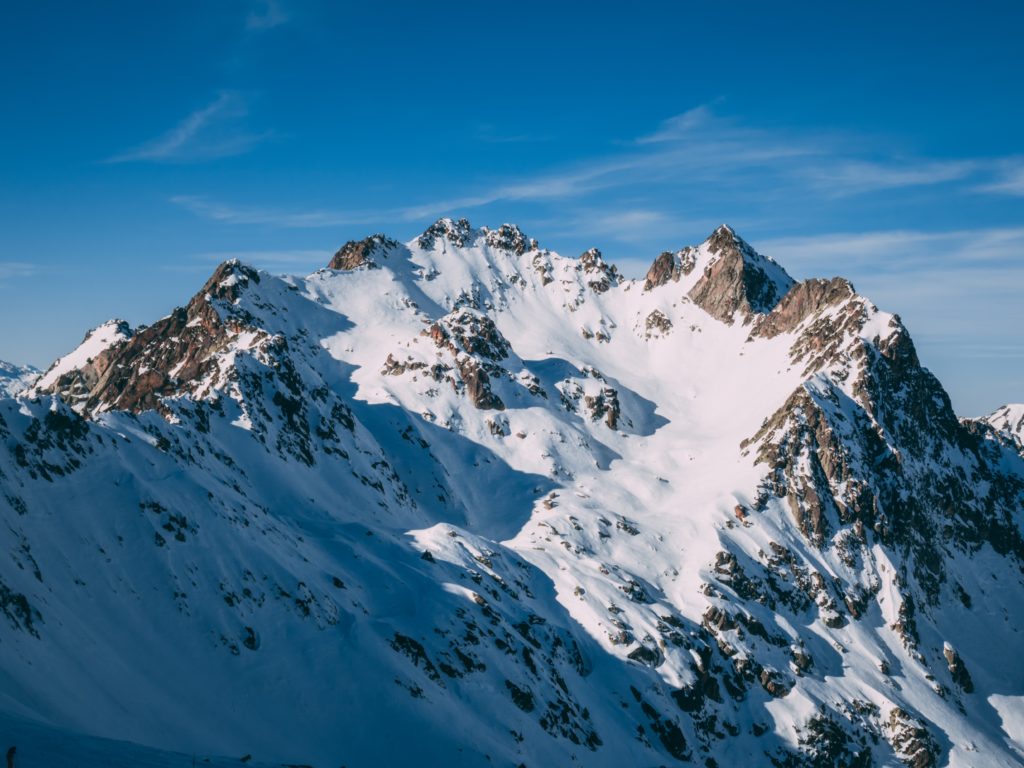
Why Manimahesh is More Than a Trek
Unlike other Himalayan treks, Manimahesh isn’t just about adventure. It’s about faith, humility, and surrender. The lake doesn’t feel like just another high-altitude spot—it feels like a place where the divine and human meet.
You don’t return the same person. The mountain strips away your ego, your complaints, and your distractions. What you’re left with is gratitude—for the path, for the people, and for the chance to walk in Shiva’s shadow.
Frequently Asked Questions
Q1. Where is Manimahesh Kailash located?
It is situated in the Chamba district of Himachal Pradesh, near Bharmour.
Q2. What is Manimahesh Kailash famous for?
It is believed to be Lord Shiva’s abode, with a sacred lake at its base.
Q3. What is the altitude of Manimahesh Kailash?
The peak rises to about 5,653 meters (18,547 ft) above sea level.
Q4. What is Manimahesh Lake?
It is a holy lake at the base of the peak, where pilgrims take a ritual dip.
Q5. When is the Manimahesh Yatra held?
The yatra is organized every year during August–September, around Janmashtami.
Q6. How can one reach Manimahesh Kailash?
The trek starts from Hadsar village, about 13 km from Bharmour.
Q7. How difficult is the Manimahesh Yatra trek?
It is a moderate trek, about 13 km long, suitable for most pilgrims with basic fitness.
Q8. Are facilities available during the yatra?
Yes, temporary camps, food stalls, and medical facilities are arranged for pilgrims.
Q9. Is there a temple at Manimahesh?
Yes, the Manimahesh Temple near the lake is dedicated to Lord Shiva.
Q10. Why is it called Manimahesh?
The name comes from “Mani” (jewel) on Lord Shiva’s crown, believed to shine on full-moon nights.

